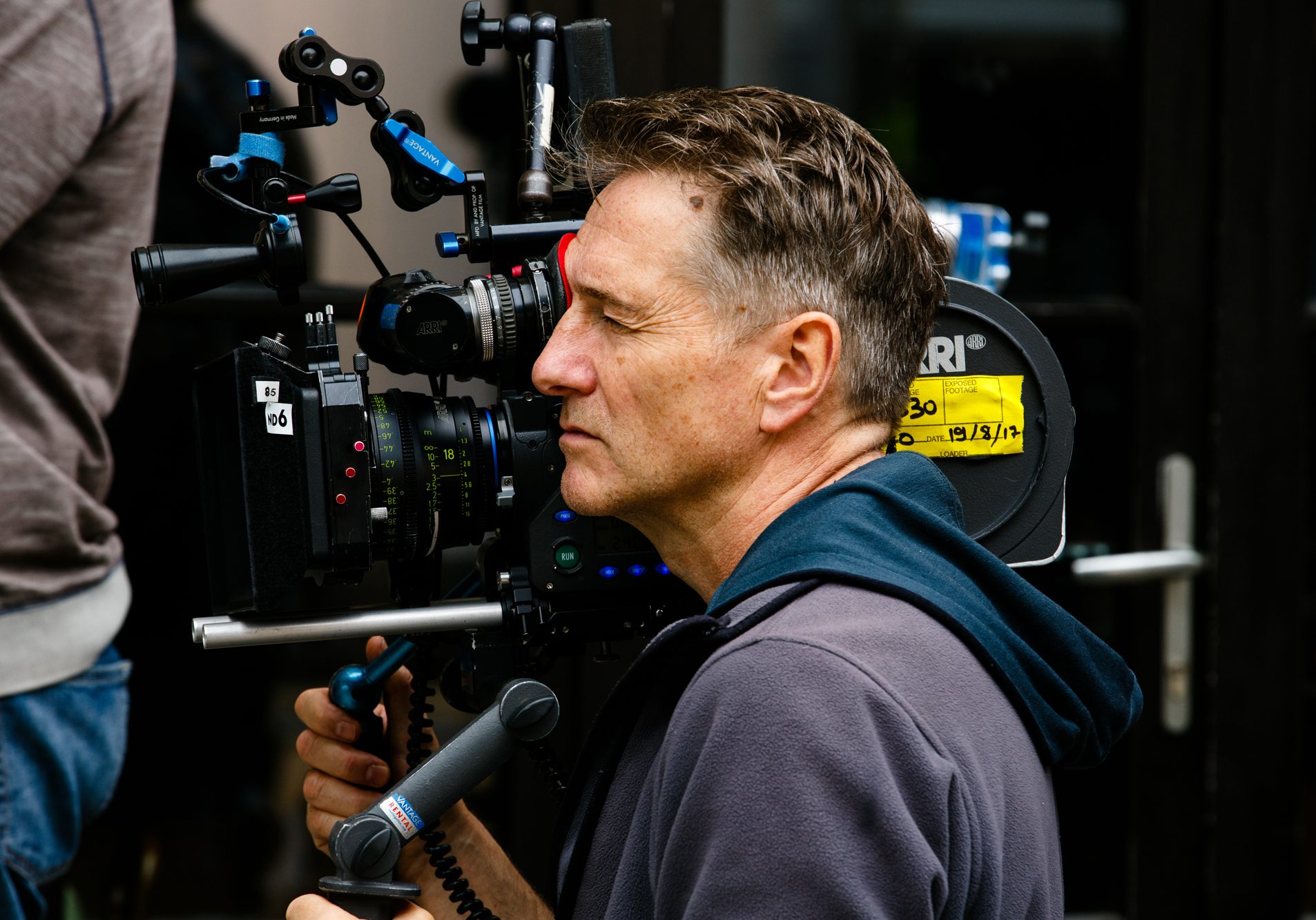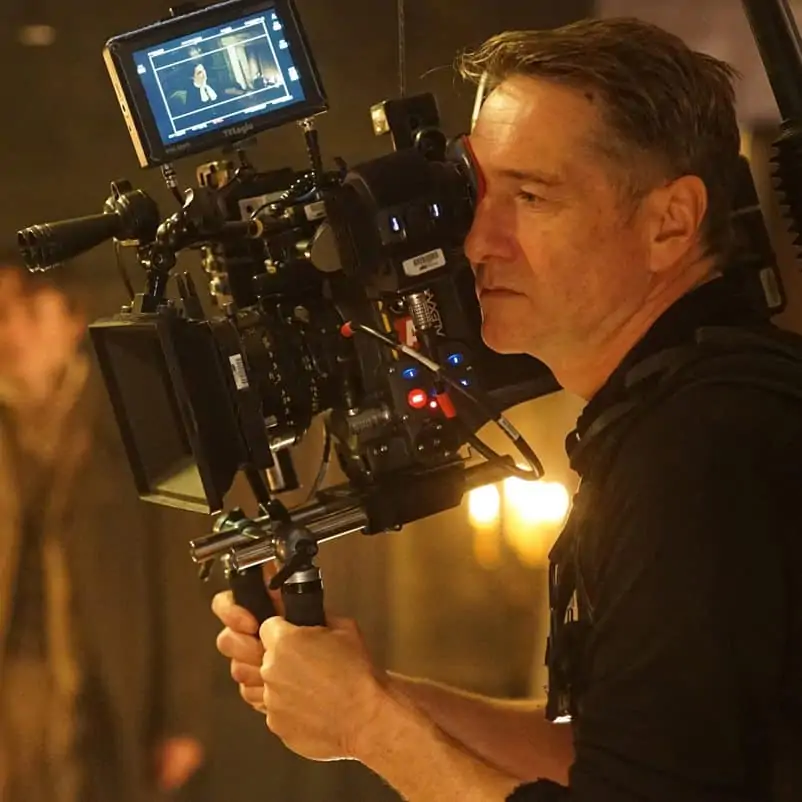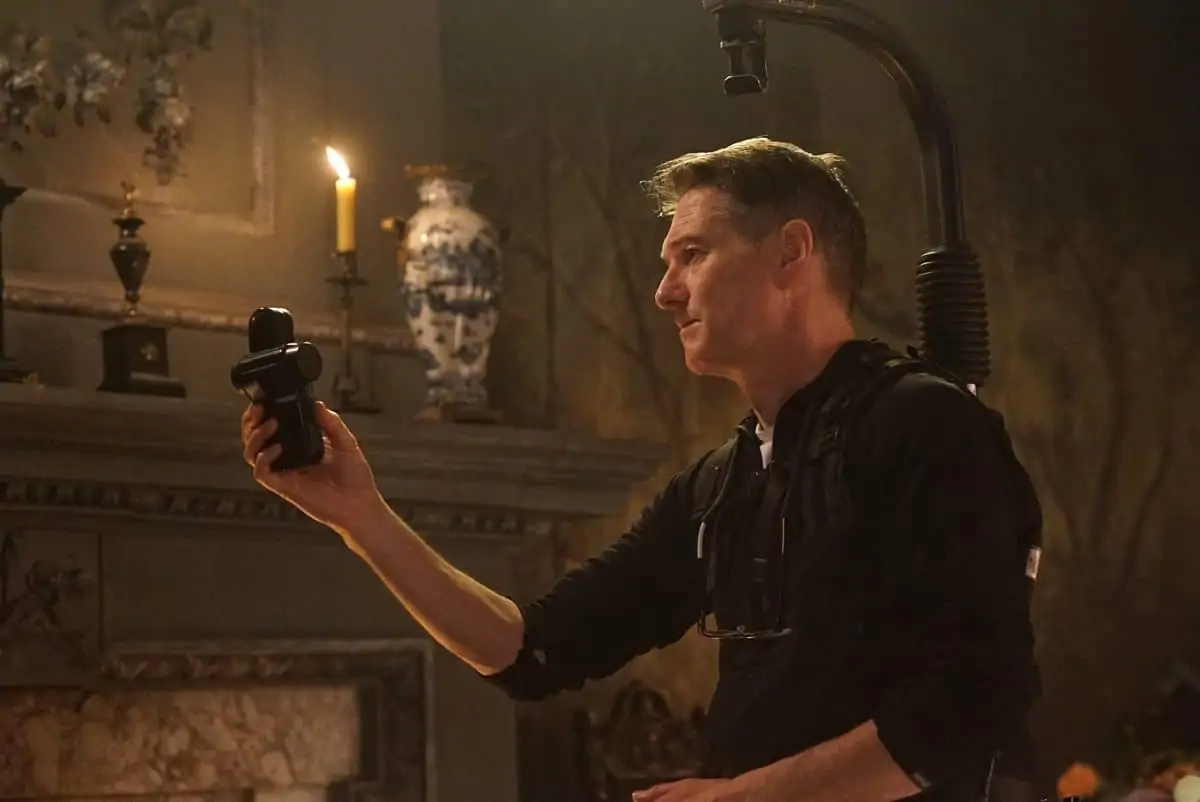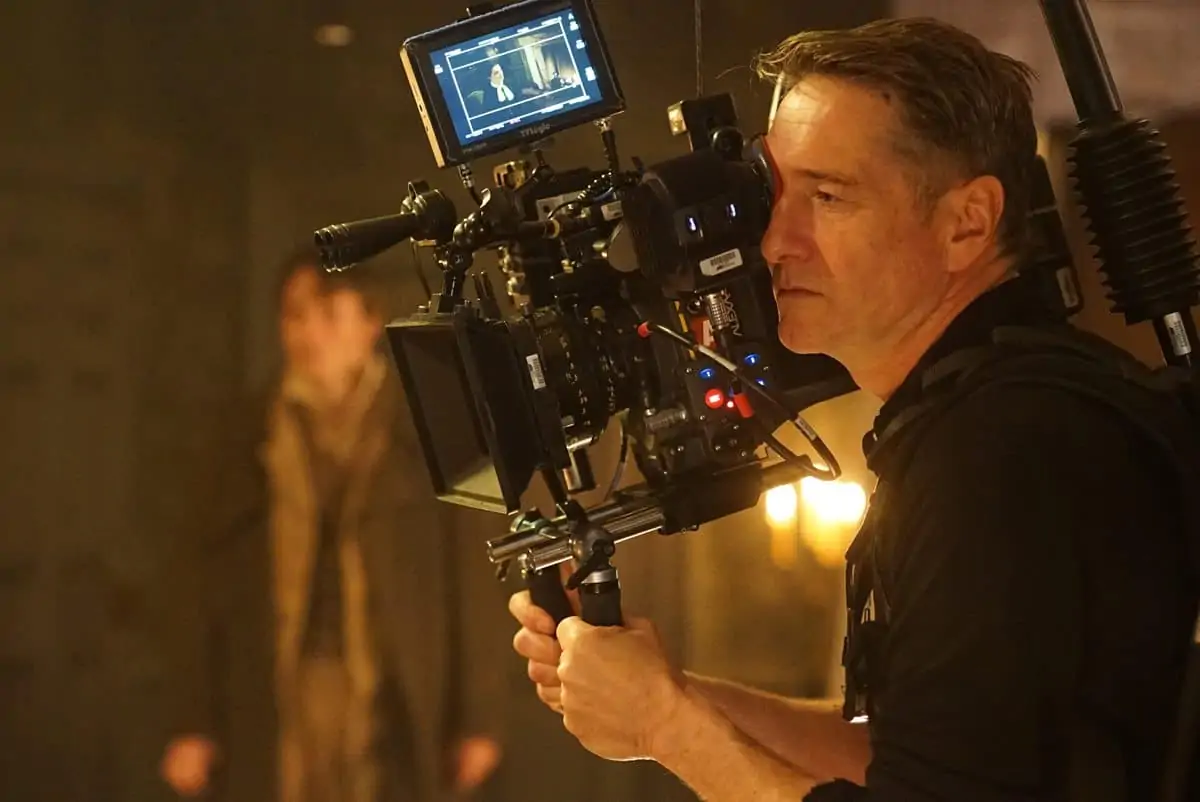Snap Shots
President's Perspective / Mike Eley BSC

Snap Shots
President's Perspective / Mike Eley BSC
This being the President’s Perspective, it’s only fair to say that my perspective these days has been one deeply embedded in the seemingly endless spin-cycle of Work-Eat-Sleep-Repeat as dictated by the call sheet.
I never forget to thank my lucky stars that that is the case (as I’ve been doing for nearly 40 years now), but the result is that when it comes to writing this particular column my thoughts are less prolonged and concise, and more random and fleeting.
So, without apology, I present a few thoughts as jotted down between takes.
The divide between art and industry, with its acute management of time, is a mark of the cinematographic world. All heads of departments labour under restraints of budget, resources and the amount of hours in a day. However, the cinematographer’s experience is different in that our time is most definitely back-loaded in the process. If one imagines a pyramid representing the pre-production and shooting of a film, and the very top tip of that pyramid is the moment of exposure, the capture of the image, of performance, of light and movement, then the cinematographer’s work is very much intensified at that apex. It’s a rush as intoxicating as it is frustrating. Other departments concentrate their work in prep with absolute creative decisions made before day one of principle photography.
God forbid, that is not to say their work is done come the first day – anyone who has spent just a short time at a unit base or location will give testament to… a) the first-in, last-out work ethic of costume, hair and make-up; and b) the responsive and improvisational skills they all need whenever an actor or director changes their mind (i.e. often) ensuring that their vision of character and story remain intact.
"Cartier-Bresson just had 1/250th of a second to capture his “defining moment”; the cinematographer has to fill-up seconds, sometimes minutes of perfection. We rarely achieve it, but in the striving can come unexpected poetry and what the Japanese call “Wabi-Sabi” – the embracing of imperfection and accepting its peculiar beauty."
- Mike Eley BSC
But the schedule, time itself, races inexorably and ever faster towards “Turnover!”, and in those precious and pressured moments before “Action!” the cinematographer has gone from prepared approach (remember those halcyon days of “what if…”?) to harnessing everything actor, director and nature itself can throw at them. Cartier-Bresson just had 1/250th of a second to capture his “defining moment”; the cinematographer has to fill-up seconds, sometimes minutes of perfection. We rarely achieve it, but in the striving can come unexpected poetry and what the Japanese call “Wabi-Sabi” – the embracing of imperfection and accepting its peculiar beauty. Try using that argument with the producer next time the focus is more on the actor’s ears than on her eyes.
Consider this: a pre-production meeting kicking off with an hour-long lecture on how to be a good person, aka the Anti-Harassment Policy Tutorial. Lessons in politeness and respect are now discussed like newly-developed workflows with accompanying pie charts and Venn diagrams. The cynic might say that protection of the studio brand is at the heart of such endeavours, rather than the protection of individuals lower down the pay scale. But we know that salary is no barrier to bullying and assault. Interestingly, when the professional interlocutor asked for examples of possible on-set prejudice and a crew member came back with “Class?”, the puzzled response was “Er, no, not as such. Anyone else…?”. American studio meets English socio-economic realities.
Takeaways? It’s not rocket science; don’t be rude, treat others as you yourself would want to be treated. Timely reminders are no bad thing.
Whose shot is it? Is it that stills photographers are considered singular in their work, and that it is only they who are responsible for the resulting image?. Whereas cinematographers are collaborators and merely facilitate the director’s vision? Is that why our status is so contentious in so many territories? I refer the jury to my point above – harnessing time itself plus composition and light.
Inspiration found in those moments of transit or rare repose. Seeing the sky turn a bruised purple with blues and pinks minutes after wrap and, with the camera team diligently putting the camera to bed, taking-in the subtle beauty and fleeting nature of a crepuscular landscape. Again, Time. Then the first AD snaps you out of your revery “So… tomorrow….first up…”.
And then getting back to the hotel, turning on the TV and finding Jaws at the point where Sheriff Brody is sitting on the beach, looking nervously out to sea, fearing the worst. Direction, editing and cinematography coming together to devastating effect. This is why we do it.
The divide of art and industry and its human cost. At last there is some movement in the investigation into Mark Milsome’s death, with the pre-inquest review on October 29th in London. It has been two years since the tragic events in Ghana, and it behoves all of us in the industry to keep Mark’s name alive. The foundation that bears his name continues its good work. We wish it, and the Milsome family, all the very best in the coming weeks and months as, hopefully, clarity is afforded this tragic case.
Mike Eley BSC
President
British Society Of Cinematographers










